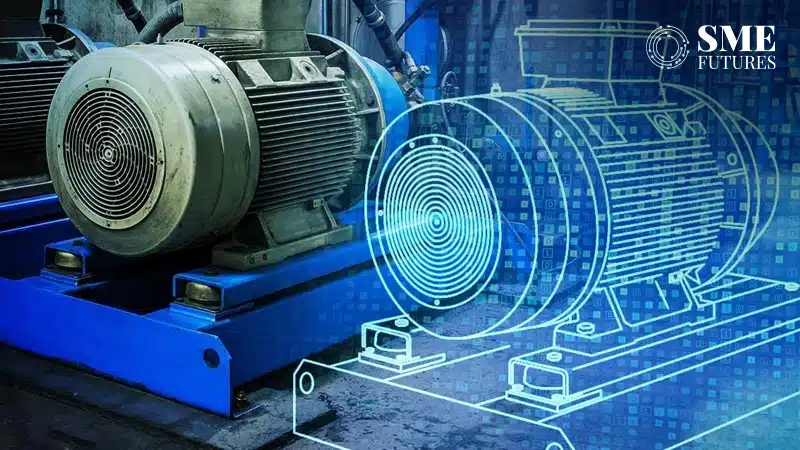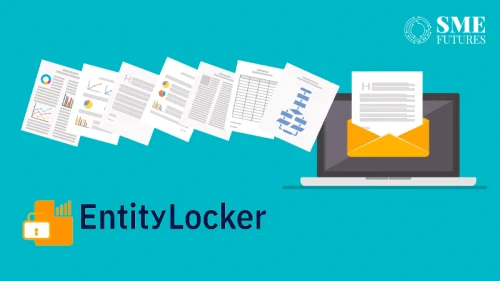The rise of digital twins is reshaping industries by moving beyond simulation to provide real-time decision-making capabilities, says Vikas Bhonsle, Vice President – Asia & MEA, Crayon Software Experts India. Acting as virtual replicas of physical systems, digital twins offer organisations the ability to predict outcomes, optimise operations, and transform the way they interact with the physical world.
“Digital twins are not just digital replicas; they represent a new way to monitor, understand, and optimise real-world systems. They serve as powerful tools, providing businesses with real-time insights to predict future outcomes and make informed decisions,” explains Bhonsle.
According to Markets and Markets, the global digital twin market is projected to surge from $10.1 billion in 2023 to $110.1 billion by 2028, underscoring the growing relevance of the technology.
Moving beyond simulation to real-time impact
Bhonsle notes that digital twins initially began as predictive simulation tools but have evolved to drive operational efficiency. “With advancements in AI, machine learning, IoT, and big data, digital twins now deliver continuous insights, supporting real-time decision-making and optimisation.”
In manufacturing, these tools enable predictive maintenance, reducing planning time by 20-50 per cent and increasing equipment uptime by 20 per cent, according to Deloitte. In the energy sector, the global digital twin market is expected to grow from $1.5 billion in 2022 to $8.2 billion by 2030, as Precedence Research reports. Bhonsle highlights that “grid operators use digital twins to predict demand, optimise distribution, and prevent blackouts, reducing waste and ensuring reliability.”
Helping CEOs make smarter decisions
For business leaders, digital twins provide a strategic edge. “CEOs can move from reactive to proactive strategies using live data from physical assets. This gives them a holistic view of their organisation’s performance,” explains Bhonsle.
By integrating real-time data, digital twins enable faster, better-informed decisions—whether it’s predicting equipment failures, streamlining supply chains, or accelerating product development cycles.
“AI-powered analytics within digital twins offer actionable insights to reduce risks, minimise downtime, and boost operational efficiency,” Bhonsle adds.
Transforming healthcare through personalisation
Healthcare is one of the sectors witnessing significant disruption through digital twins. “Doctors can use patient data—collected through wearables and cloud computing—to create digital twins of individuals, personalising treatments in real time,” explains Bhonsle.
This technology also allows surgeons to rehearse complex procedures on digital replicas, minimising risks and enhancing precision. According to a study by Accenture, digital twins have the potential to reduce patient care costs by 10 per cent and improve outcomes by 15 per cent. Bhonsle envisions a future where digital twins play a critical role in predictive and personalised medicine.
Shaping smart cities with digital twins
Smart cities are another area where digital twins are proving indispensable. “Urban planners are leveraging digital twins to model infrastructure systems—such as transportation networks, water supplies, and public safety systems—using real-time data from IoT sensors,” says Bhonsle.
A prime example is Virtual Singapore, a digital replica of the entire city that integrates data from traffic management to waste systems, enabling urban planners to optimise operations in real-time. IDC projects that global investments in smart cities will reach $158 billion by 2023, with digital twins playing a pivotal role in this transformation.
Challenges and opportunities on the horizon
Despite the promise of digital twins, Bhonsle acknowledges that there are challenges to adoption. “Creating and maintaining a digital twin requires substantial investments in infrastructure, including sensors, IoT devices, and AI capabilities,” he points out.
Security is another concern, particularly in industries like healthcare and energy, where compromised data streams could lead to life-threatening consequences. However, Bhonsle emphasises that the rewards far outweigh the risks. “As digital twin technology matures, it will become more accessible, even to smaller organisations, offering them a competitive edge through optimised operations and data-driven decisions.”
Future of digital twins: A new era of data-driven decisions
The potential applications of digital twins will only grow as industries continue to adopt emerging technologies. Gartner predicts that by 2025, nearly 50 per cent of large industrial companies will use digital twins to improve productivity, efficiency, and customer satisfaction.
“Digital twins are evolving beyond simulation tools to become essential for real-time decision-making. With AI, cloud computing, and machine learning integrated, they will continue to drive innovation and operational excellence,” says Bhonsle.
As industries like manufacturing, healthcare, energy, and urban planning lead the adoption of digital twins, Bhonsle believes that companies embracing this technology will be better positioned to thrive in an increasingly competitive market. “Digital twins represent the future of real-time, data-driven operations. Those who adopt them will be at the forefront of the next industrial revolution.”
Digital twins are transforming how businesses operate by providing real-time insights that drive smarter decisions. From manufacturing floors to operating rooms, and from energy grids to smart cities, this technology is reshaping industries in unprecedented ways. As Bhonsle aptly puts it, “The rise of digital twins signals a new era of efficiency and agility—an era where decisions are no longer based on assumptions but driven by data in real time.”
As organisations embrace this evolving technology, they unlock new opportunities to optimise performance and stay ahead in a fast-changing world.











